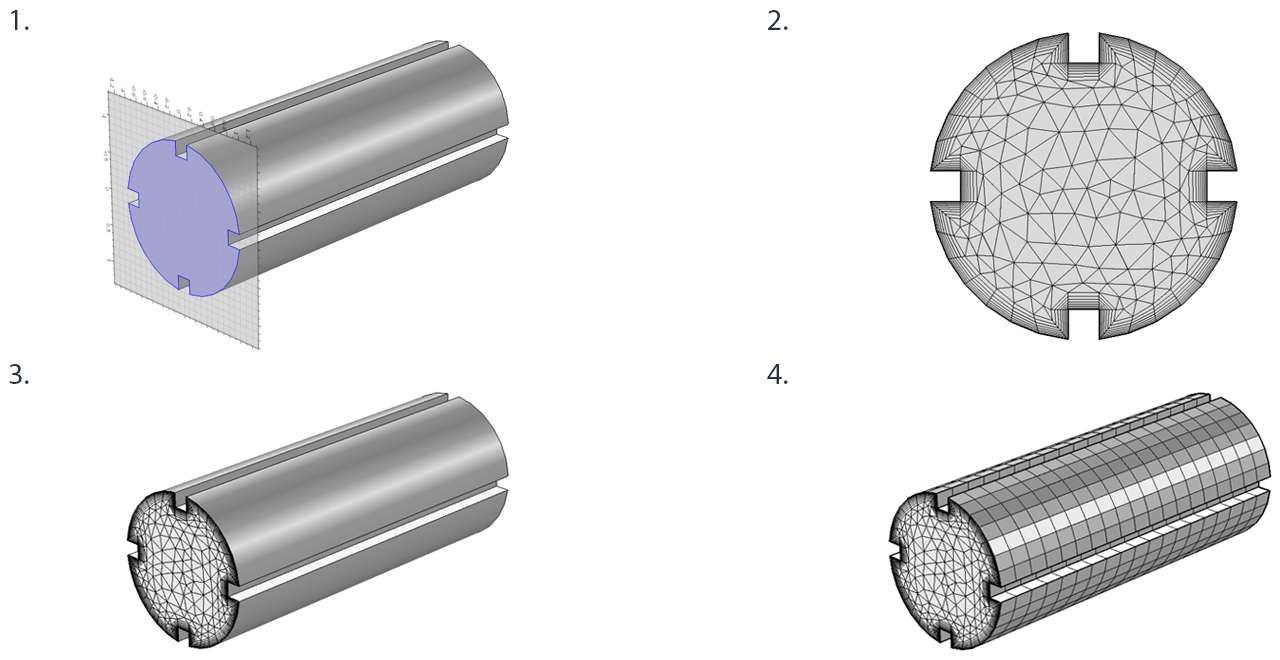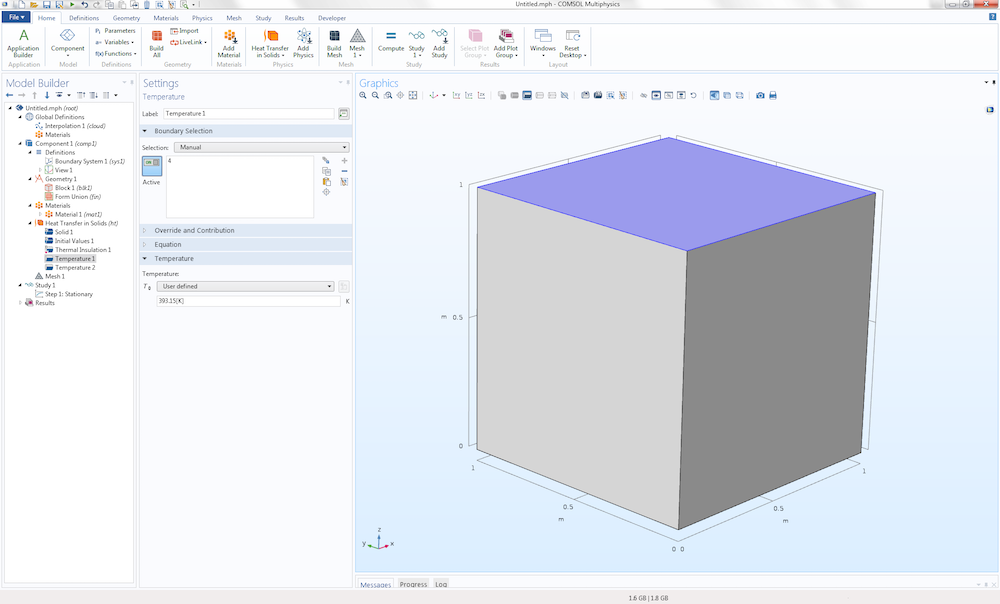

Attached the 2D cut line plot (c vs y for different x) and the resulting BL growth plot (of y for c=0,8 vs x) from Excel. Looked pretty linear in the region of c=0,8, but otherwise it is just to plot and fit a trendline and interpolate with the equation. I imported the data into excel and used the Forecast linear interpolation to determine the y-coordinate height at which the concentration was 0,8. So I want to know how I can find out the thickness of the teal line as. Also notice that the teal layer is getting thicker as we move across the block. As you can see, the boundary layer is the teal color, and the blue is the bulk concentration. All these curves come on the same plot, which you then can export the data from (helps to select "sort" under Advanced). Here is a photo of the concentration profile obtained from the simulation. Then made a 1D plot group with a 1D line graph that graphed the concentration on each x-value for the Cut Line.
#Comsol 5.1 interpolation function series
Adding more boundary layer mesh elements might be a better way to get finer resolution in the region of interest (boundary layer) without making the whole domain finely meshed (and hence slow to solve).įor a sledgehammer approach I try defining in DataSets a 2D Cut Line, vertical at a series of x positions. You could specify your own mesh (seems like you have just used a Coarse, Physics defined mesh). The mesh is quite coarse in the boundary region, and there were only two boundary layer elements. I wish to create an interpolation function of experimental time-course data using the (Options->Function) tool. Hopefully that means it has been incorporated into some other feature (and it is just a matter of finding what) I have a 1D domain and have written my PDEs using the transient diffusion mode from the model navigator.

I am not sure whether the independent variable t in comsol is time for interpolation or I can use any term For example plot Specific heat vs Temperature. Too much of the time I am using a slow, sledgehammer approach to do things, thinking there must be an elegant built-in function to do it.įrom a search it seems there was a feature inn earlier versions of COMSOL called postinterp() which looks like it might have something to do with it, but this does not return any hits when searching the documentation or help. I was trying to use the interpolation function and use it it the heat source.

But when I am using the functions, the simulation enters in a no-end loop. I got results with constant number for the properties which I tetsed for making sure my model is working propely. It is now possible to drive the terminal using a fixed current.
#Comsol 5.1 interpolation function how to
This video shows you how to create each of these function types for any material property you want.I'd also like to know how to do this. I am running a natural convection model and I put the material properties as a function of temperature (interpolation) and piecewise functions. View screenshot > Terminal feature improved.

You can enter the start and end points for each interval and the function relevant to each interval, as well as choose the interpolation and extrapolation methods. Piecewise Functions are useful for describing a material property that has different definitions on different intervals. Then, enter the arguments to the function and specify the value range for each argument. For materials you need to define a blanc material, add the interpolation function, read from file, and. First, enter the mathematical expression that defines the function. Then, specify the function behavior between data points and outside of your range of data.Īnalytic Functions are used to specify material properties as functions of one or more arguments, or as independent variables, such as temperature or pressure. Either enter the data manually or import it from a data file. Interpolation Functions can be used to describe material properties that are defined by a table or file containing values of the function at discrete points. The functions plot correctly, showing a very OK-looking curve representing the rate coefficient in function of the electron energy. To switch easily between some different conditions I wanted for, I defined some interpolation functions from tables. In COMSOL Multiphysics, you can use Interpolation, Analytic, and Piecewise Functions to specify a material property. As a new COMSOL user, I am currently trying to run a simulation of an Ar plasma.


 0 kommentar(er)
0 kommentar(er)
